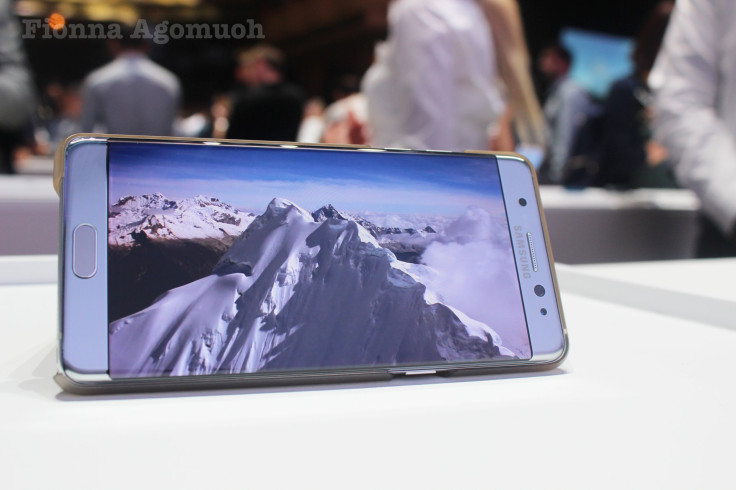Samsung announced its latest high-end processor on Thursday, the Exynos 9 Series 8895. The chip has been announced approximately one month before the launch of the Galaxy S8, which makes it a likely component for the device. However, Samsung has not yet confirmed whether the Galaxy S8 will run the processor.
Looking forward, there is also a good chance the Exynos 8895 will be featured on the Samsung Galaxy Note 8. The phablet is expected to release in summer or fall of 2017. Few rumors are circulating for the Galaxy Note 8 at this point, but it is easy to assume that one of Samsung’s 2017 flagships would feature its 2017 premium processing chip.
The Galaxy Note 7 featured the Exynos 8890 chip during its short time on the market in fall 2016. The Galaxy S7 and Galaxy S7 Edge also feature the Exynos 8890 in select markets (and the Qualcomm Snapdragon 821 in most). Samsung announced the Exynos 8890 in November 2015 and the chip was ready for the Galaxy S7 and Galaxy S7 Edge announcement in February 2016 and their market release in March 2016.
While Samsung’s launch schedule is slightly different in 2017 due to the delay of the Galaxy S8, the timeline follows a similar trajectory. The Exynos 8895 being announced in late February, for a device that likely won’t be on the market until late April, leaves ample time for mass production of the chip. Typically, Samsung announced is Galaxy S devices in late February, coinciding with Mobile World Congress; however, the Galaxy S8 unveiling has been pushed to late March, in the wake of the Galaxy Note 7 discontinuation.
Samsung usually equips only a select amount of handsets with its proprietary chip. Exynos chips are often seen in devices for the Asian, African and Middle Eastern markets. Meanwhile, American and European markets get Galaxy smartphones running Qualcomm Snapdragon chips. The Galaxy S8 is expected to run the Snapdragon 835 chip, which Qualcomm announced in November 2016. The chip uses Samsung’s 10nm FinFET technology and rumors suggest the Galaxy S8 will run the Snapdragon 835 exclusively at launch due to its collaboration with Qualcomm. Other manufacturers aren’t expected to use the Snapdragon 835 until the second half of 2017.
The Exynos 8895 also uses the 10nm FinFET technology, making it a supplementary chip to the Snapdragon 835. The semiconductor technology allows for greater area efficiency, performance and lower power consumption than prior chips, such as the Exynos 7420 and the Snapdragon 821.
Once the Galaxy S8 is on the market, the Exynos 8895 should be a shoo-in for the Galaxy Note 8. Similarly, some models will likely run the Qualcomm Snapdragon 835. By the time the Galaxy Note 8 is ready for launch there should be enough Exynos and Snapdragon chips procoded to easily equip the smartphone. Additionally, as a more niche line the Galaxy Note line typically ship at about half the volume of Galaxy S smartphones.
Recent reports suggest the Galaxy Note 8 is codenamed “Baikal,” after the ancient Siberian lake. Pundits have suggested the codename could be associated with some sort of water feature for the Galaxy Note 8.
Some speculative rumors for the Galaxy Note 8 include a 4K resolution display and a 256GB internal storage option. Overall, the Galaxy Note 8 will likely feature an amalgamation of features from the Galaxy S8 and Galaxy Note 7.
Samsung has confirmed the Galaxy Note 8 will release later in 2017; however, the manufacturer has not revealed an exact launch timeframe for the device. Analysts predict Samsung will largely maintain its late summer or early fall announcement and release cycle for the Galaxy Note 8.

















